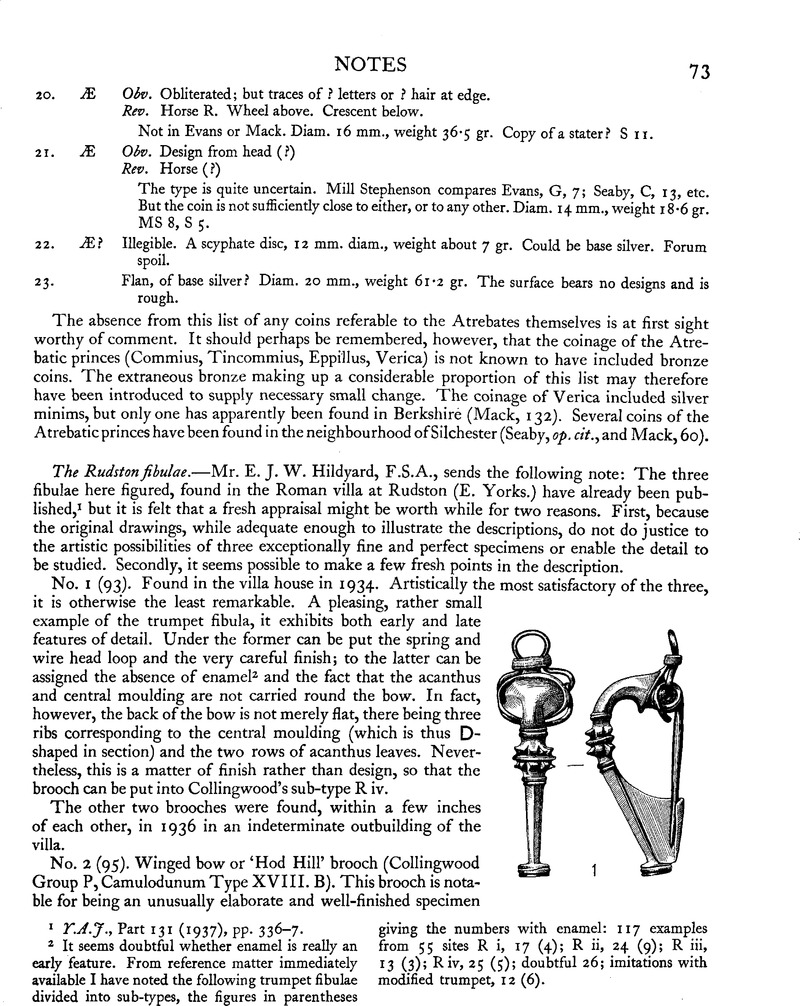No CrossRef data available.
Article contents
The Rudston fibulae
Published online by Cambridge University Press: 29 November 2011
Abstract

- Type
- Notes
- Information
- Copyright
- Copyright © The Society of Antiquaries of London 1964
References
page 73 note 1 Y.A.J., Part 131 (1937), pp. 336-7.
page 73 note 2 It seems doubtful whether enamel is really an early feature. From reference matter immediately available I have noted the following trumpet fibulae divided into sub-types, the figures in parentheses giving the numbers with enamel: 117 examples from 55 sites R i, 17 (4); R ii, 24 (9); R iii, 13 (3); Riv, 25 (5); doubtful 26; imitations with modified trumpet, 12 (6).
page 74 note 1 Camulodunum, p. 323.
page 74 note 2 Hull Museum Publications, no. 39 (1907), pl. xxv, 10 and 11.
page 74 note 3 Thoroton Society, Excavation Section, Third Annual Report, 1938, pls. 11 and 11 a.
page 74 note 4 Y.A.J., Part 122 (1933).
page 75 note 1 Collingwood, (Archaeologia, lxxx, 56)Google Scholar states that the head stud brooches ‘were easier to make [than the trumpet] and at least equally popular’, but the numbers I have been able to find, 54 against 117, confirm my own impression that the one type is about half as common as the other. Of the 30 sites, only Traprain, Newstead, and Richborough have more than 3 specimens, but there is a fine series [unpublished] in Aldborough Museum.
page 75 note 2 B.M. Guide (edition of 1922), fig. 63.
page 75 note 3 Richborough IV, nos. 34 and 35.
page 75 note 4 Huddersfield in Roman Times, fig. 2a.
page 75 note 5 Pl. LXXXV, no. 3.
page 75 note 6 Richborough IV, no. 33.
page 75 note 7 Ibid., nos. 36 and 37. 36 is one of a pair.


